EPA Researchers Showcase Research Capabilities To Local And National Media
By U.S. EPA
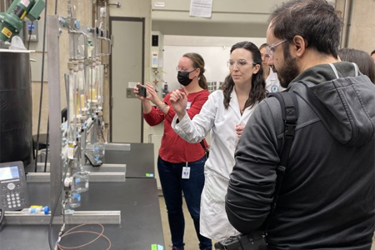
EPA researcher recently hosted members of local and national media on a tour of our unique research complex located in Cincinnati, OH, where they discussed several topics including PFAS in drinking water, lead service lines, and legionella in premise plumbing.
The tour began in Cincinnati’s Drinking Water Pilot Plant. This state-of-the-art drinking water lab enables water treatment research at the bench-, pilot-, and near full-scale. Current research in the pilot plant focuses on treatment technologies to remove contaminants, including PFAS and toxins resulting from harmful algal blooms.
Reporters saw EPA scientists preparing samples of water, which were then filtered through ion exchange resin. EPA researchers discussed the current methods of filtering PFAS from drinking water, as well as their ongoing research to find thorough and cost-effective filtration methods for both small and large drinking water systems.
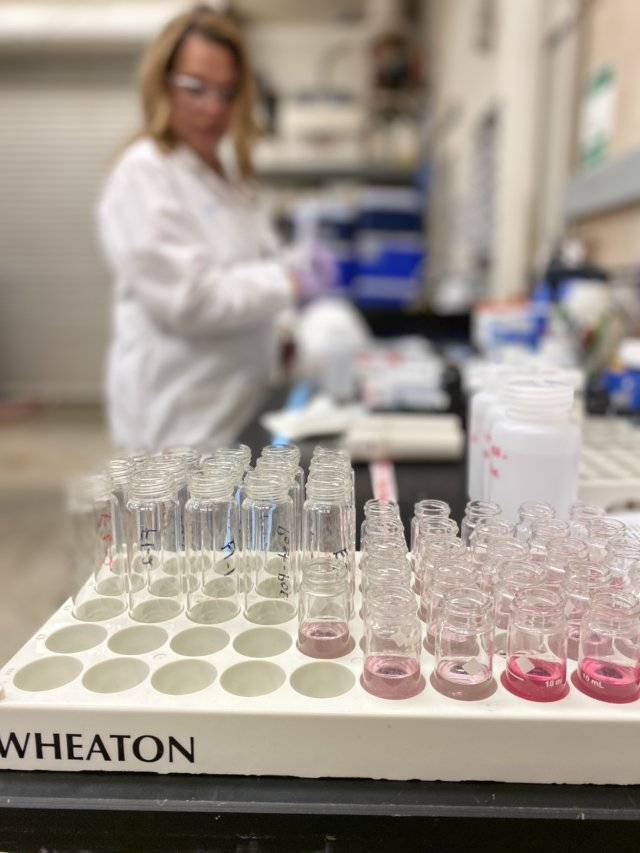
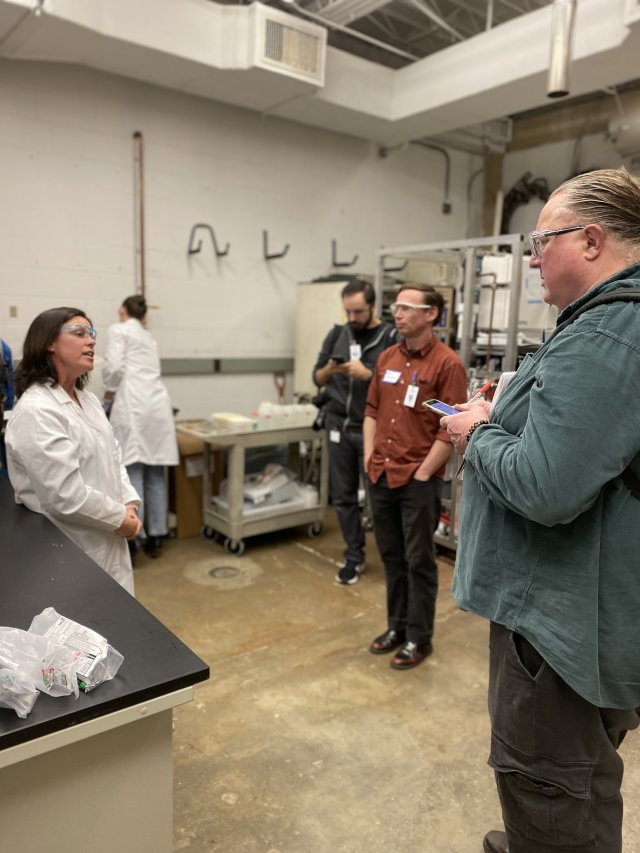
On this portion of the tour, EPA scientists discussed research on lead service line identification technologies as well as research on legionella in building plumbing systems and mitigation approaches for reducing exposure.
The pilot plant includes a “home plumbing simulator” that allows for testing how changes in water treatment processes can affect water quality in a home or building. This allows researchers to learn more about the behavior of lead and legionella in premise plumbing.
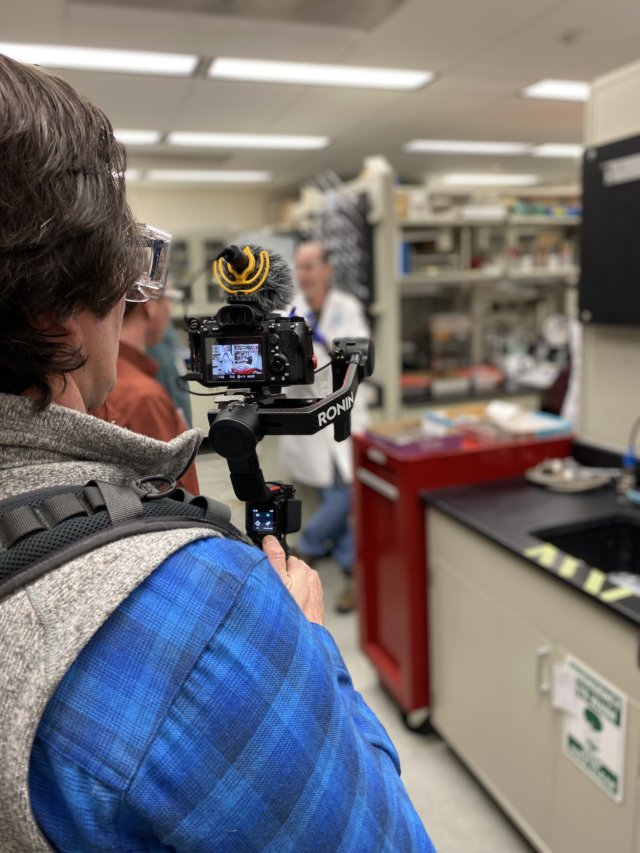
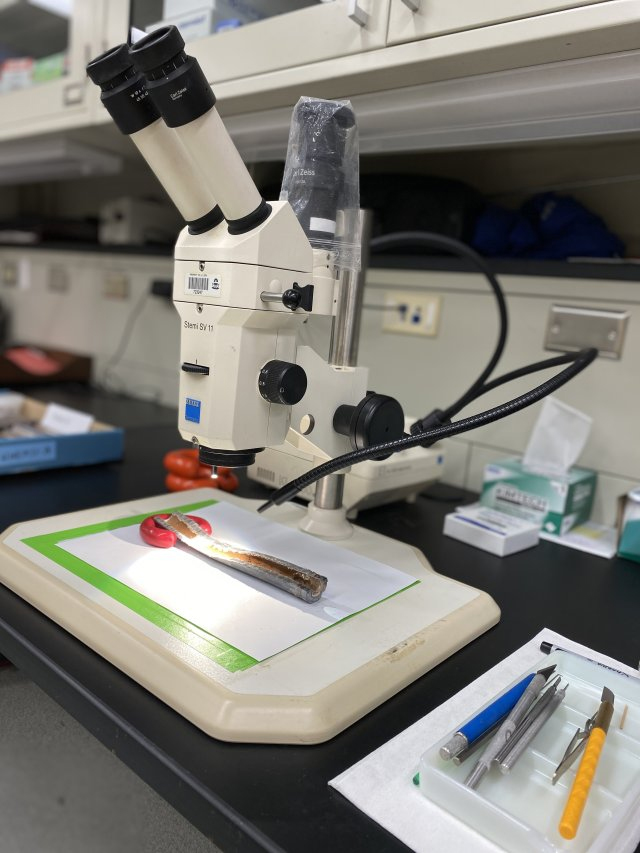
Next, EPA researchers in the Advanced Materials and Solids Analysis Resource Core (AMSARC) Laboratory spoke to the reporters about lead pipes. This lab is the foundation for EPA's solids and surfaces analysis capabilities; the tour featured state-of-the-art analytical equipment that supports various projects, including water quality research, corrosion control, green chemistry, bacteria and nanomaterials characterization, arsenic removal from drinking water, and many others.
This lab has a library of lead pipe samples from different cities across the nation, which were collected and studied to provide technical support to states and communities related to the Lead and Copper Rule (LCR). These pipe samples were studied to gain further information about the specific chemistry impacting each city’s lead pipes. Reporters viewed cross sections of some of these pipes displayed under a microscope to examine the lead scales.
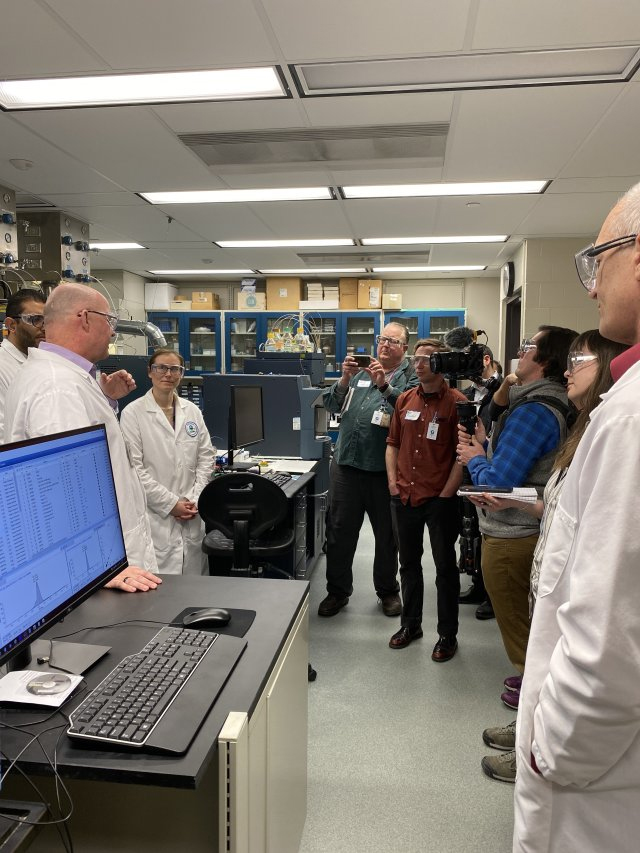
The tour moved on to one of EPA’s main PFAS laboratories, where multiple techniques are used to develop PFAS methods and quantitate and characterize PFAS in environmental samples from in-house and extramural projects. EPA scientists discussed ongoing efforts to improve the efficiency of PFAS analyses within EPA.
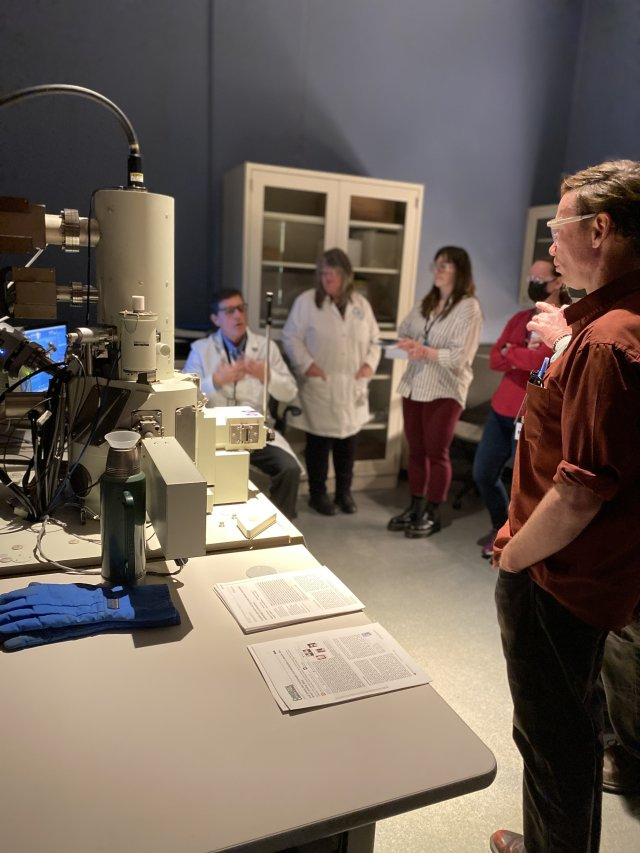
The tour concluded in Cincinnati’s Full Containment Facility, a self-contained and environmentally isolated research facility designed for analytical and experimental research on highly toxic or hazardous materials. This facility is next to the main building and includes several labs with capacities to analyze and characterize unknown waste samples and to conduct laboratory-scale treatment and treatment-related research. The Full Containment Facility includes extremely sensitive electron microscopes, which are situated over bedrock to reduces floor movement and create a clear image at intense magnification.
